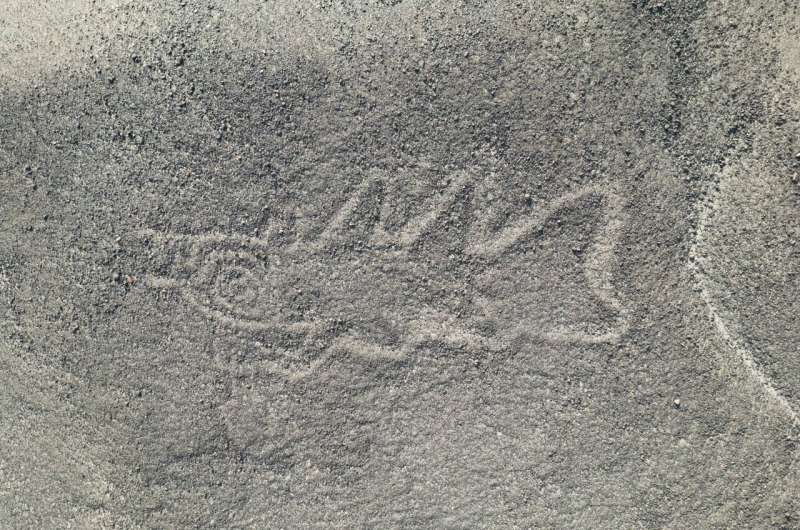A small team of archaeologists at Yamagata University, working with a colleague from Université Paris, and a pair of AI researchers from the IBM Thomas J. Watson Research Center, used an AI model to find more geoglyphs on the floor of Peru’s Nazca Desert.
In their study published in Proceedings of the National Academy of Sciences, the team developed an AI model capable of identifying faint signs of geoglyphs amid the natural landscape on the Nazca Pampa by analyzing images captured by drones.
Over the past century, archaeologists, historians and other scholars have been intrigued by the geoglyphs inscribed on the ground in a desert in Nazca, Peru, many of which can only be seen in their entirety from a great distance, such as from a mountain or airplane.
Previous research has found that they were created by the Nasca culture over the years 200 BCE to 700 CE by moving rocks or pebbles, or by scraping the ground. The resulting giant pictures are now called geoglyphs.
Prior to this new study, 430 geoglyphs were discovered and studied in Peru, though the rate at which new ones have been found has slowed. Researchers suspect that many more are yet to be discovered, but efforts to find them have been met with difficulties due to their size and clarity.

For this new study, the team in Japan turned to artificial intelligence experts at IBM to help with the search. Together, they created an AI application capable of identifying geoglyphs from aerial pictures of the desert floor, no matter how faint.
After training the model on images of existing geoglyphs, the research team used it to look for more. They found 303 that they were able to confirm through site visits by human experts.
As expected, many of the lines comprising the newly found geoglyphs were faint, but the researchers could discern what they depict, mainly humans and domesticated animals, though some were abstract, such as a knife-wielding killer whale. The team plans to continue using the AI app to search for more examples of the ancient art.
More information:
Masato Sakai et al, AI-accelerated Nazca survey nearly doubles the number of known figurative geoglyphs and sheds light on their purpose, Proceedings of the National Academy of Sciences (2024). DOI: 10.1073/pnas.2407652121
© 2024 Science X Network
Citation:
Archaeologists use AI to find hundreds of geoglyphs in Peru’s Nazca Desert (2024, September 24)
retrieved 24 September 2024
from https://phys.org/news/2024-09-archaeologists-ai-hundreds-geoglyphs-peru.html
This document is subject to copyright. Apart from any fair dealing for the purpose of private study or research, no
part may be reproduced without the written permission. The content is provided for information purposes only.

